Abstract
1. Single and few-fibre cardiac efferent filaments were dissected from the cervical vagus nerve of dogs anaesthetized with chloralose and paralysed with pancuronium. 2. Brief selective baroreceptor or chemoreceptor stimuli, given during the expiratory phase of the central respiratory cycle and while the lungs were motionless, evoked trains of action potentials in cardiac vagal efferent fibres. These vagal responses outlasted the duration of the stimuli by 1-3 s. 3. Brief selective baroreceptor or chemoreceptor stimuli given during the inspiratory phase of the central respiratory cycle (monitored as phrenic discharge) but while the lungs were motionless, failed to evoke reflex increases in discharge. Background vagal discharge was also inhibited during central inspiratory activity. 4. Brief baroreceptor or chemoreceptor stimuli given during lung inflation but in the expiratory phase of the central respiratory cycle (phrenic silence), also failed to evoke any reflex increase in discharge, but left resting vagal tone relatively unaffected. Only when vagal tone was high was it markedly inhibited by lung inflation, in the absence of central inspiratory activity. 5. A point of contrast between the inhibitory effects of lung inflation and of central inspiratory activity is that both tonic and reflexly evoked vagal discharge are inhibited during central inspiratory activity, but lung inflation more markedly inhibits reflexly evoked vagal discharge than tonic vagal discharge. 6. A model is suggested to explain the different mechanisms of inhibition by lung inflation and by central inspiratory activity.
Full text
PDF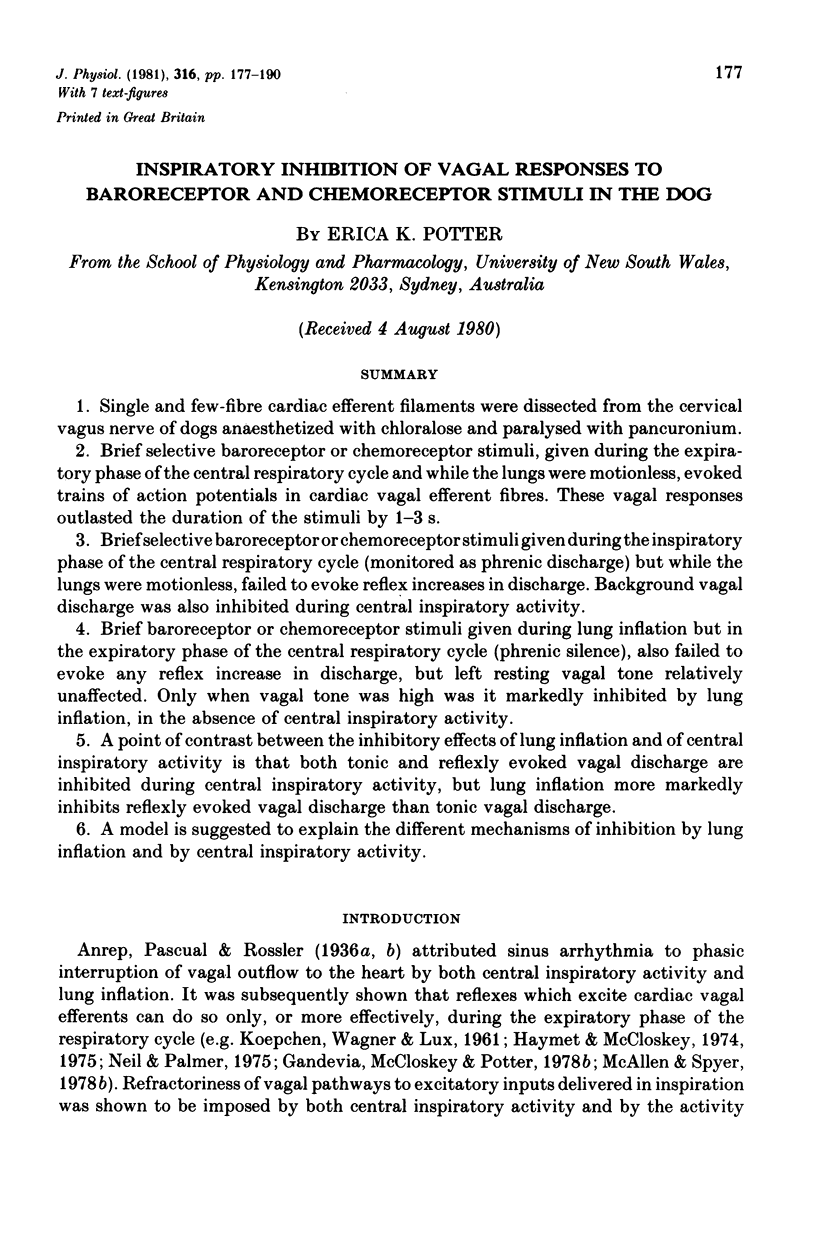

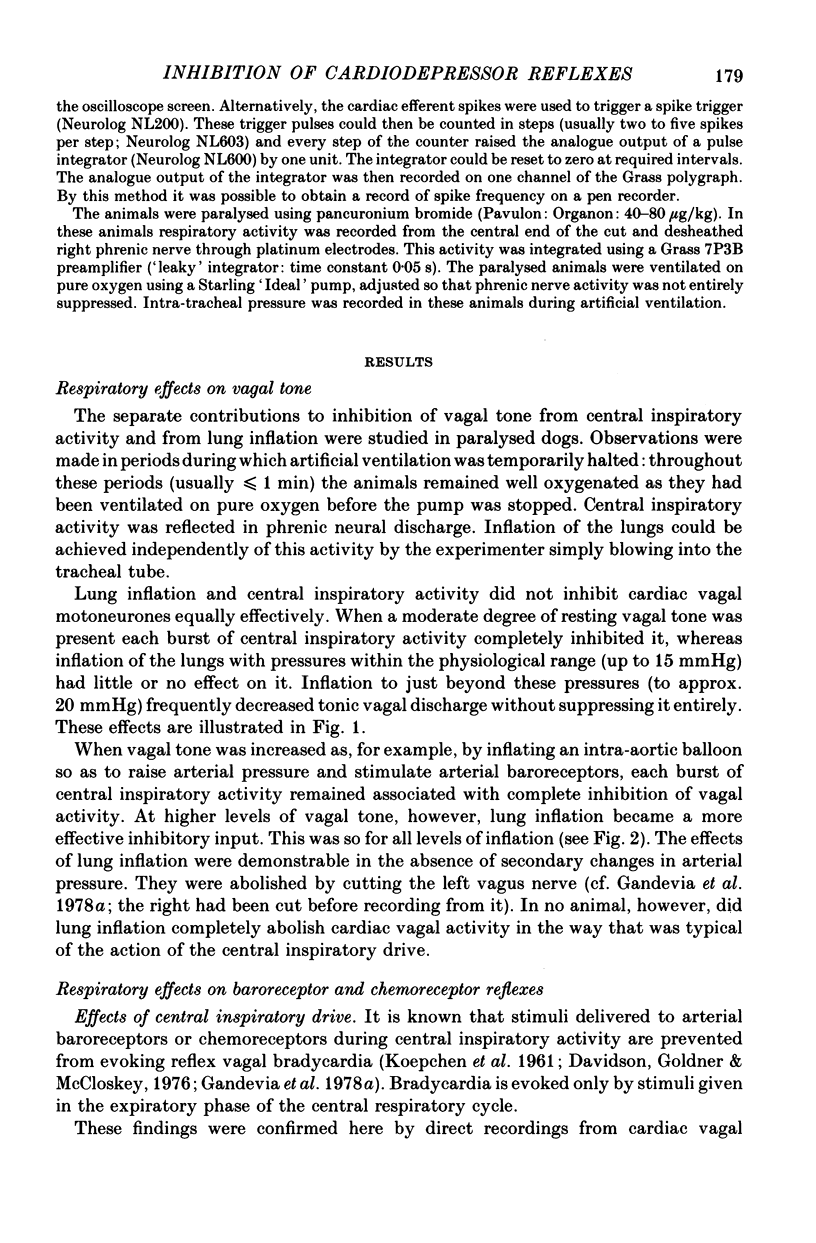
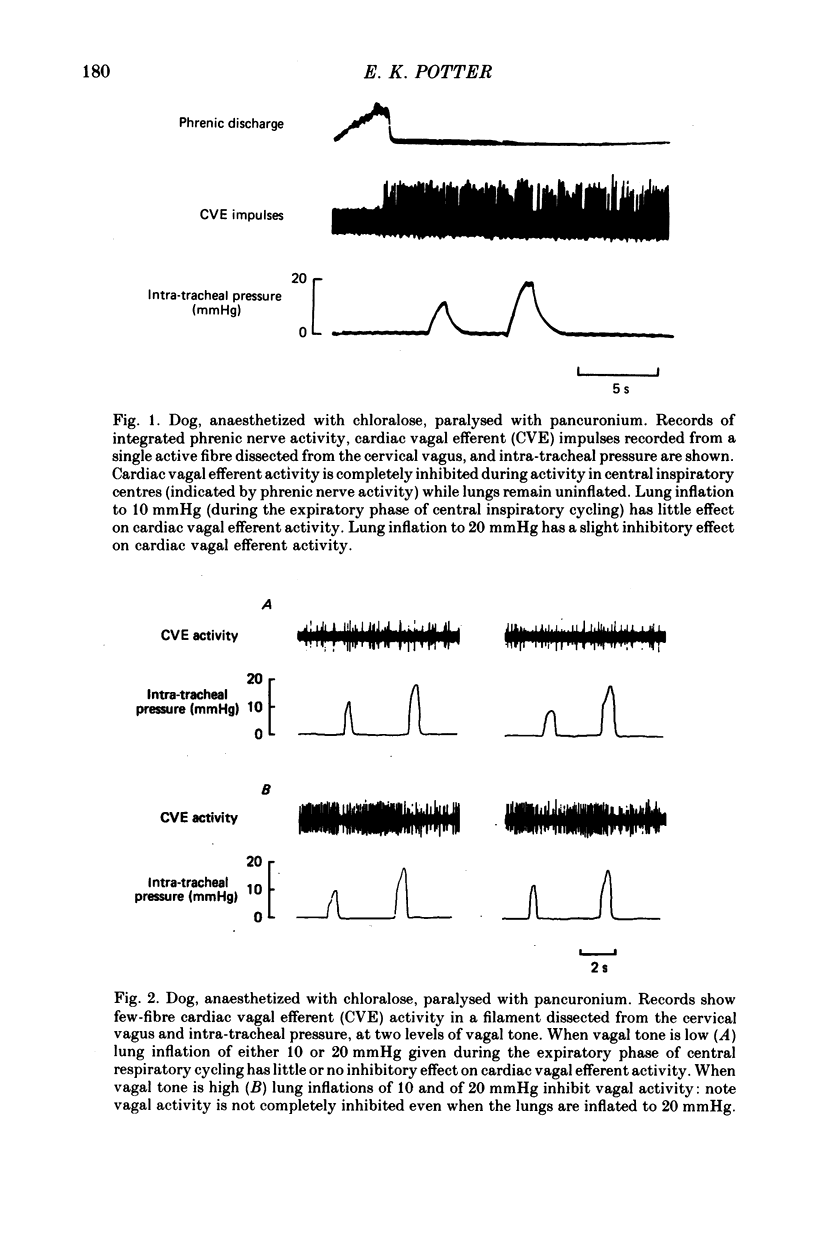
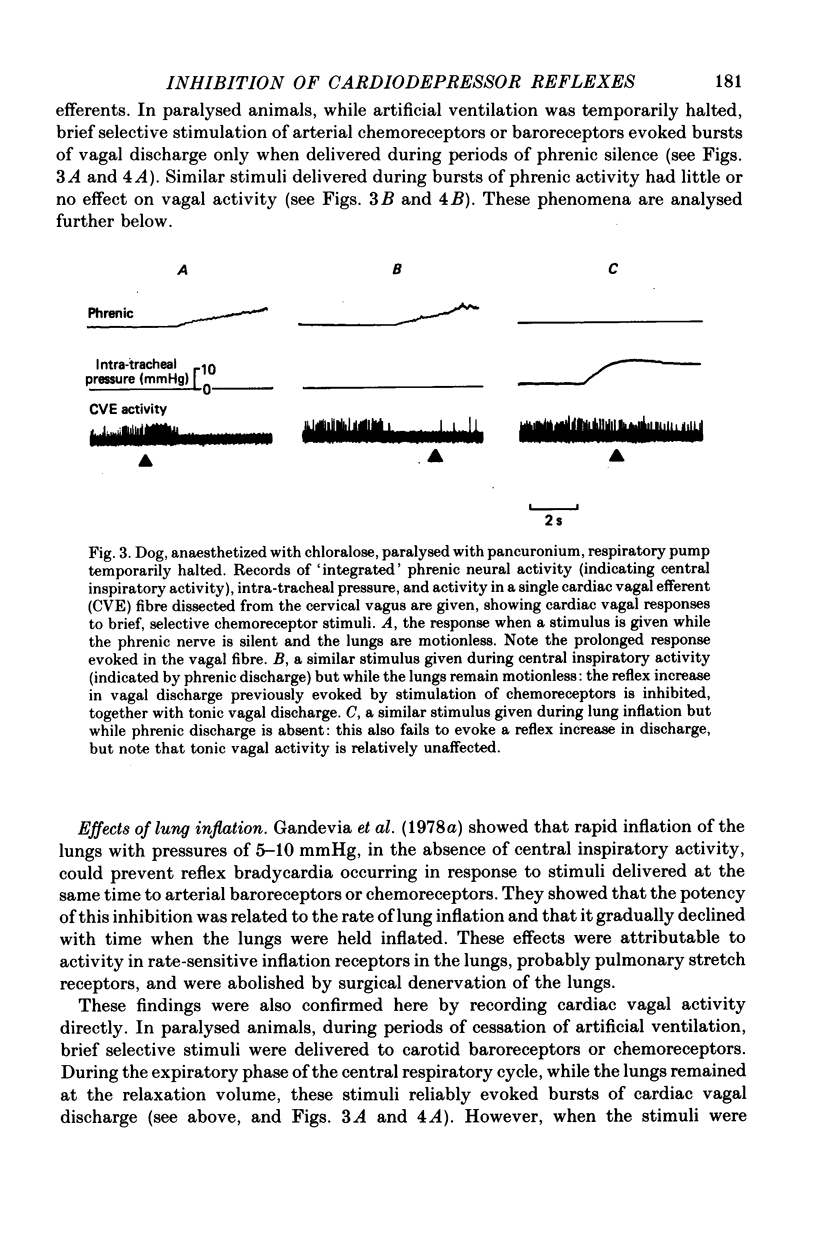
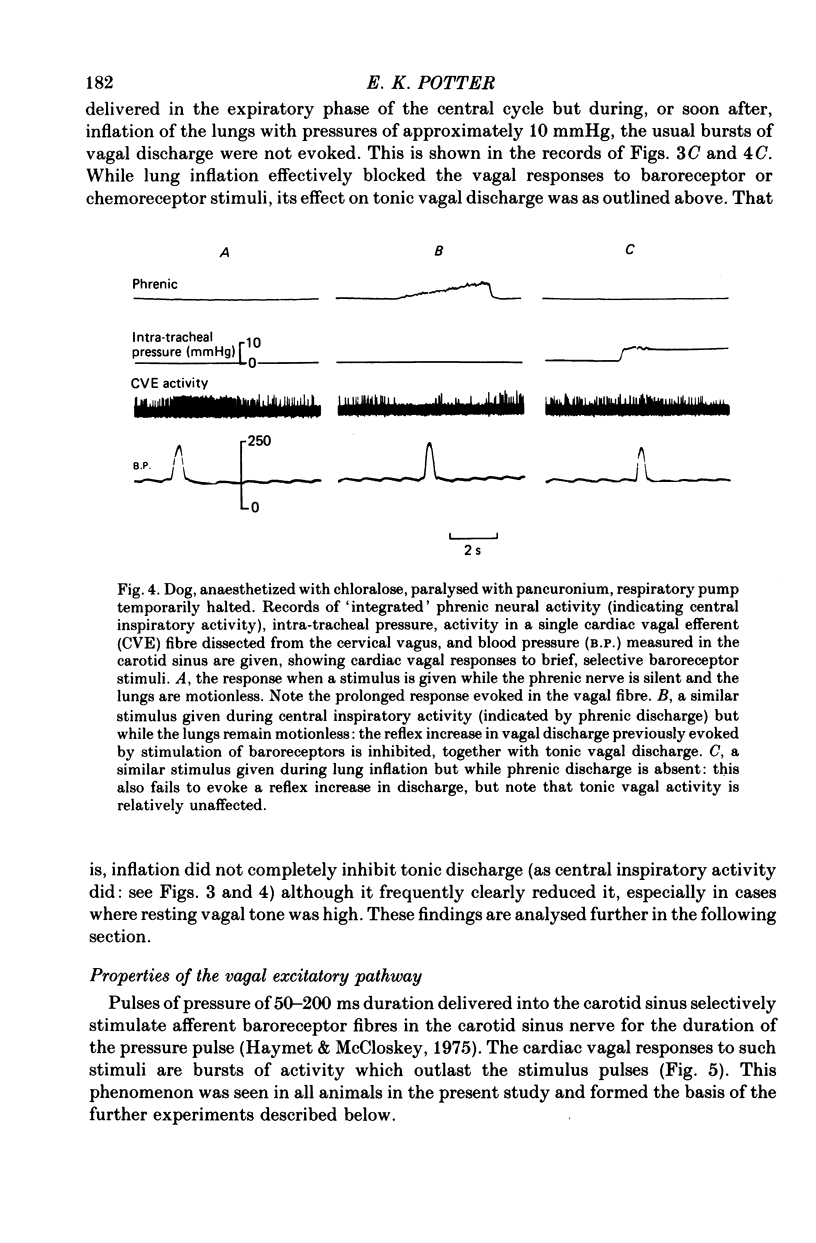
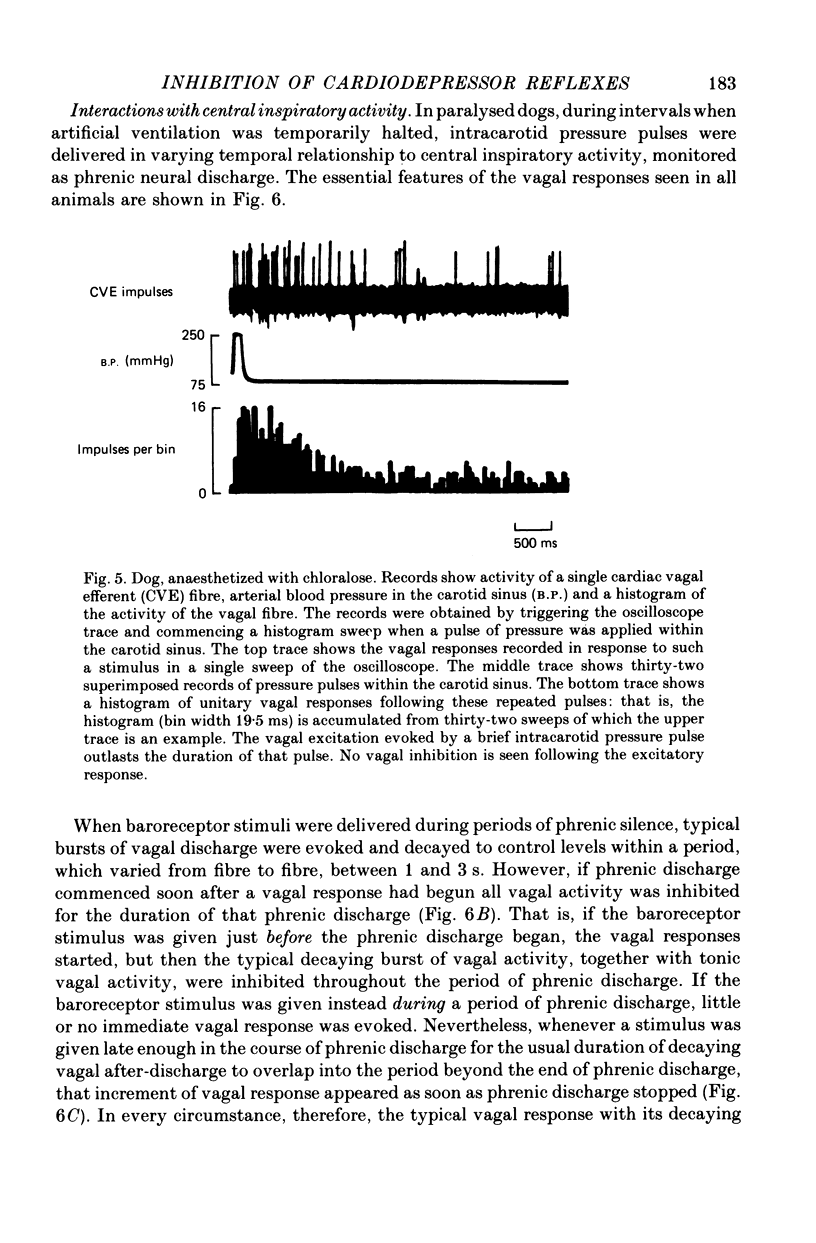
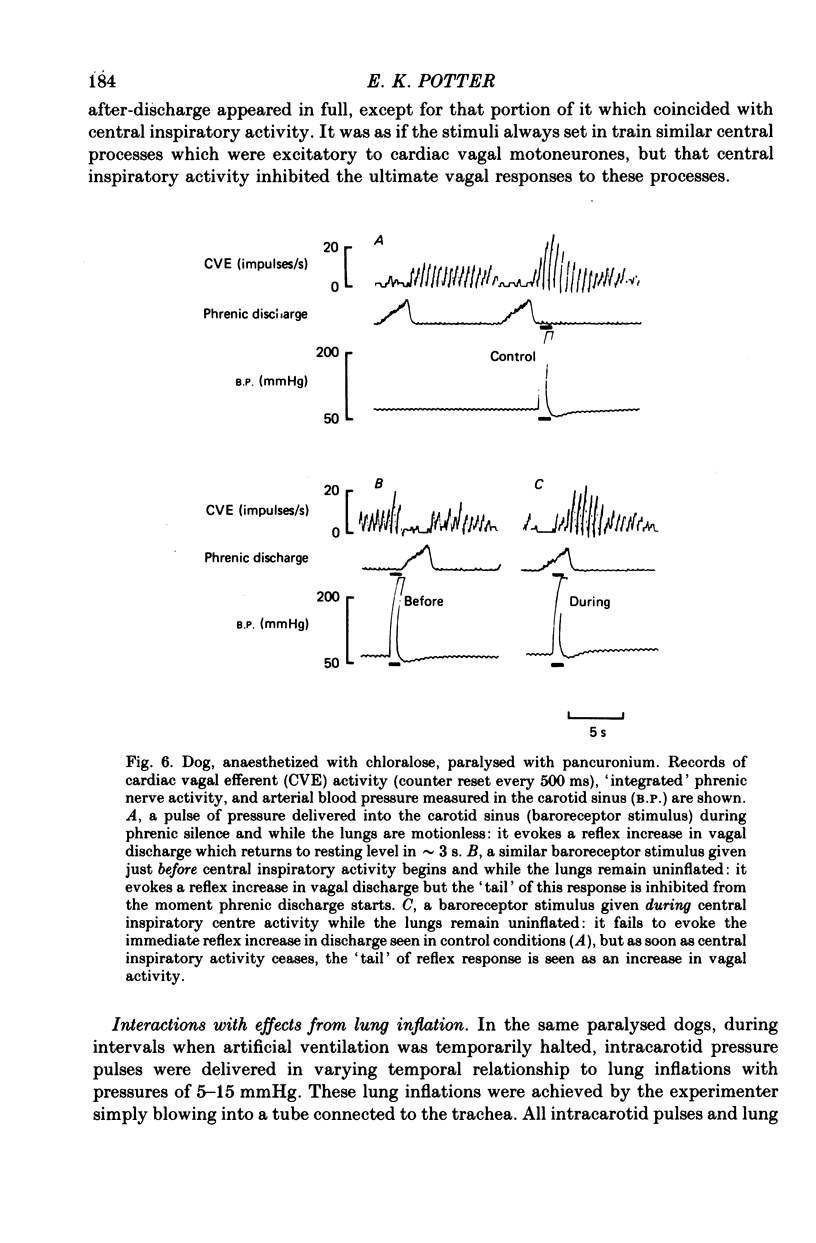

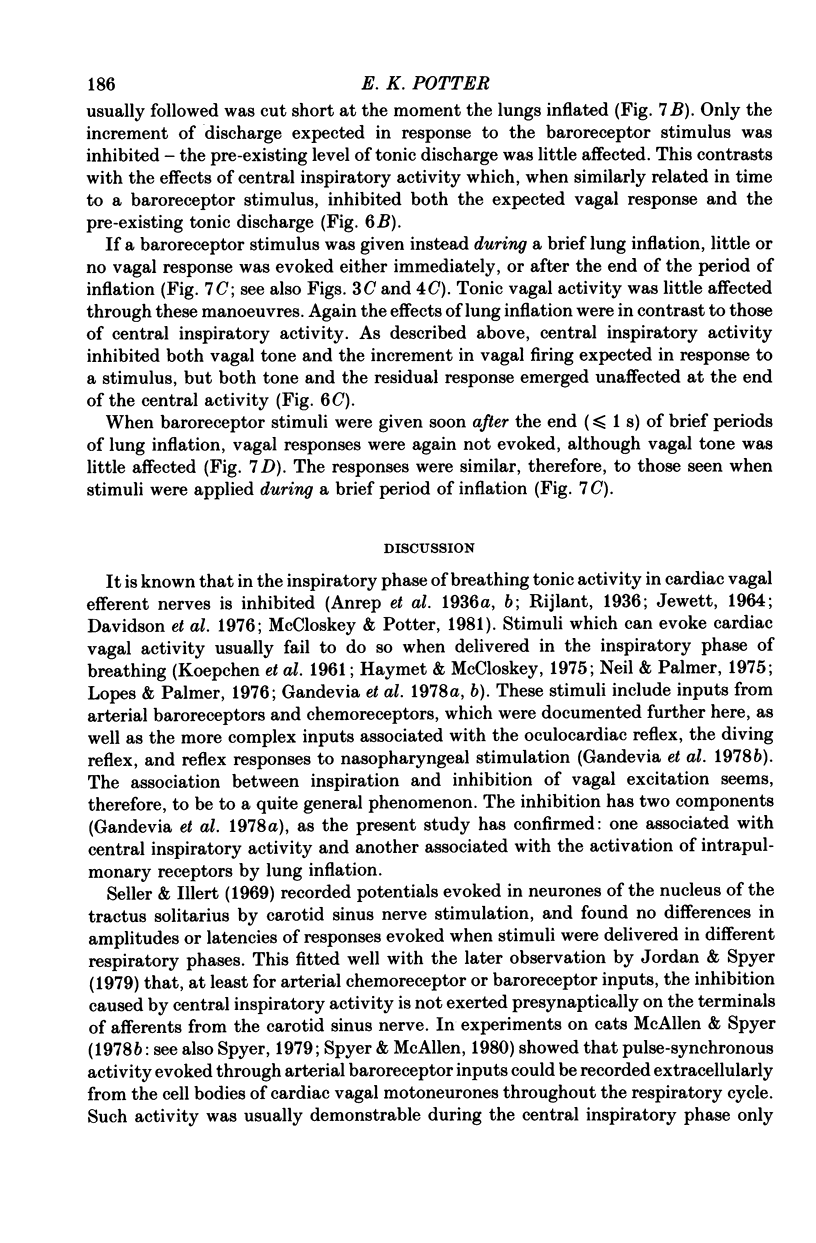



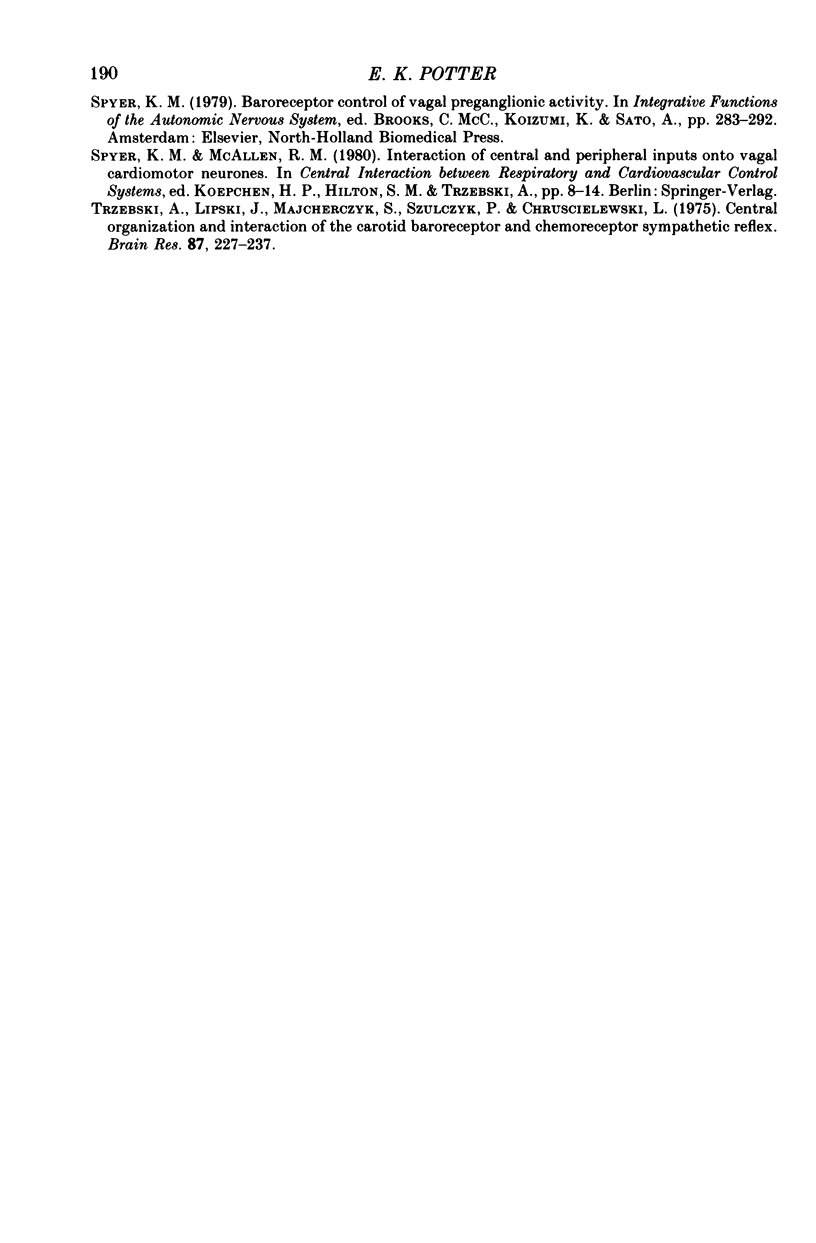
Selected References
These references are in PubMed. This may not be the complete list of references from this article.
- ASERINSKY E., DEBIAS D. A. Suppression of oculocardiac reflex by artificial respiration. Arch Ophthalmol. 1963 Apr;69:484–491. doi: 10.1001/archopht.1963.00960040490012. [DOI] [PubMed] [Google Scholar]
- Biscoe T. J., Sampson S. R. Responses of cells in the brain stem of the cat to stimulation of the sinus, glossopharyngeal, aortic and superior laryngeal nerves. J Physiol. 1970 Aug;209(2):359–373. doi: 10.1113/jphysiol.1970.sp009169. [DOI] [PMC free article] [PubMed] [Google Scholar]
- Black A. M., Torrance R. W. Respiratory oscillations in chemoreceptor discharge in the control of breathing. Respir Physiol. 1971 Nov;13(2):221–237. doi: 10.1016/0034-5687(71)90092-2. [DOI] [PubMed] [Google Scholar]
- DE DALY M. B., SCOTT M. J. The effects of stimulation of the carotid body chemoreceptors on heart rate in the dog. J Physiol. 1958 Nov 10;144(1):148–166. doi: 10.1113/jphysiol.1958.sp006092. [DOI] [PMC free article] [PubMed] [Google Scholar]
- Daly M. D., Robinson B. H. An analysis of the reflex systemic vasodilator response elicited by lung inflation in the dog. J Physiol. 1968 Mar;195(2):387–406. doi: 10.1113/jphysiol.1968.sp008464. [DOI] [PMC free article] [PubMed] [Google Scholar]
- Davidson N. S., Goldner S., McCloskey D. I. Respiratory modulation of barareceptor and chemoreceptor reflexes affecting heart rate and cardiac vagal efferent nerve activity. J Physiol. 1976 Jul;259(2):523–530. doi: 10.1113/jphysiol.1976.sp011480. [DOI] [PMC free article] [PubMed] [Google Scholar]
- Gandevia S. C., McCloskey D. I., Potter E. K. Inhibition of baroreceptor and chemoreceptor reflexes on heart rate by afferents from the lungs. J Physiol. 1978 Mar;276:369–381. doi: 10.1113/jphysiol.1978.sp012240. [DOI] [PMC free article] [PubMed] [Google Scholar]
- Gandevia S. C., McCloskey D. I., Potter E. K. Reflex bradycardia occurring in response to diving, nasopharyngeal stimulation and ocular pressure, and its modification by respiration and swallowing. J Physiol. 1978 Mar;276:383–394. doi: 10.1113/jphysiol.1978.sp012241. [DOI] [PMC free article] [PubMed] [Google Scholar]
- Haymet B. T., McCloskey D. I. Baroreceptor and chemoreceptor influences on heart rate during the respiratory cycle in the dog. J Physiol. 1975 Mar;245(3):699–712. doi: 10.1113/jphysiol.1975.sp010869. [DOI] [PMC free article] [PubMed] [Google Scholar]
- IRIUCHIJIMA J., KUMADA M. EFFERENT CARDIAC VAGAL DISCHARGE OF THE DOG IN RESPONSE TO ELECTRICAL STIMULATION OF SENSORY NERVES. Jpn J Physiol. 1963 Dec 15;13:599–605. doi: 10.2170/jjphysiol.13.599. [DOI] [PubMed] [Google Scholar]
- JEWETT D. L. ACTIVITY OF SINGLE EFFERENT FIBRES IN THE CERVICAL VAGUS NERVE OF THE DOG, WITH SPECIAL REFERENCE TO POSSIBLE CARDIO-INHIBITORY FIBRES. J Physiol. 1964 Dec;175:321–357. doi: 10.1113/jphysiol.1964.sp007520. [DOI] [PMC free article] [PubMed] [Google Scholar]
- Jordan D., Spyer K. M. Studies on the excitability of sinus nerve afferent terminals. J Physiol. 1979 Dec;297(0):123–134. doi: 10.1113/jphysiol.1979.sp013031. [DOI] [PMC free article] [PubMed] [Google Scholar]
- Katona P. G., Poitras J. W., Barnett G. O., Terry B. S. Cardiac vagal efferent activity and heart period in the carotid sinus reflex. Am J Physiol. 1970 Apr;218(4):1030–1037. doi: 10.1152/ajplegacy.1970.218.4.1030. [DOI] [PubMed] [Google Scholar]
- Lopes O. U., Palmer J. F. Proposed respiratory 'gating' mechanism for cardiac slowing. Nature. 1976 Dec 2;264(5585):454–456. doi: 10.1038/264454a0. [DOI] [PubMed] [Google Scholar]
- MACLEOD R. D., SCOTT M. J. THE HEART RATE RESPONSES TO CAROTID BODY CHEMORECEPTOR STIMULATION IN THE CAT. J Physiol. 1964 Dec;175:193–202. doi: 10.1113/jphysiol.1964.sp007511. [DOI] [PMC free article] [PubMed] [Google Scholar]
- McAllen R. M., Spyer K. M. The baroreceptor input to cardiac vagal motoneurones. J Physiol. 1978 Sep;282:365–374. doi: 10.1113/jphysiol.1978.sp012469. [DOI] [PMC free article] [PubMed] [Google Scholar]
- McAllen R. M., Spyer K. M. Two types of vagal preganglionic motoneurones projecting to the heart and lungs. J Physiol. 1978 Sep;282:353–364. doi: 10.1113/jphysiol.1978.sp012468. [DOI] [PMC free article] [PubMed] [Google Scholar]
- McCloskey D. I., Potter E. K. Excitation and inhibition of cardiac vagal motoneurones by electrical stimulation of the carotid sinus nerve. J Physiol. 1981 Jul;316:163–175. doi: 10.1113/jphysiol.1981.sp013780. [DOI] [PMC free article] [PubMed] [Google Scholar]
- Neil E., Palmer J. F. Effects of spontaneous respiration on the latency of reflex cardiac chronotropic responses to baroreceptor stimulation. J Physiol. 1975 May;247(1):16P–16P. [PubMed] [Google Scholar]
- Seller H., Illert M. The localization of the first synapse in the carotid sinus baroreceptor reflex pathway and its alteration of the afferent input. Pflugers Arch. 1969;306(1):1–19. doi: 10.1007/BF00586608. [DOI] [PubMed] [Google Scholar]
- Trzebski A., Lipski J., Majcherczyk S., Szulczyk P., Chruścielewski L. Central organization and interaction of the carotid baroreceptor and chemoreceptor sympathetic reflex. Brain Res. 1975 Apr 11;87(2-3):227–237. doi: 10.1016/0006-8993(75)90420-5. [DOI] [PubMed] [Google Scholar]
- de Burgh Daly M. Interaction of cardiovascular reflexes. Sci Basis Med Annu Rev. 1972:307–332. [PubMed] [Google Scholar]


